The 10 Most Surprising Animals in Chile
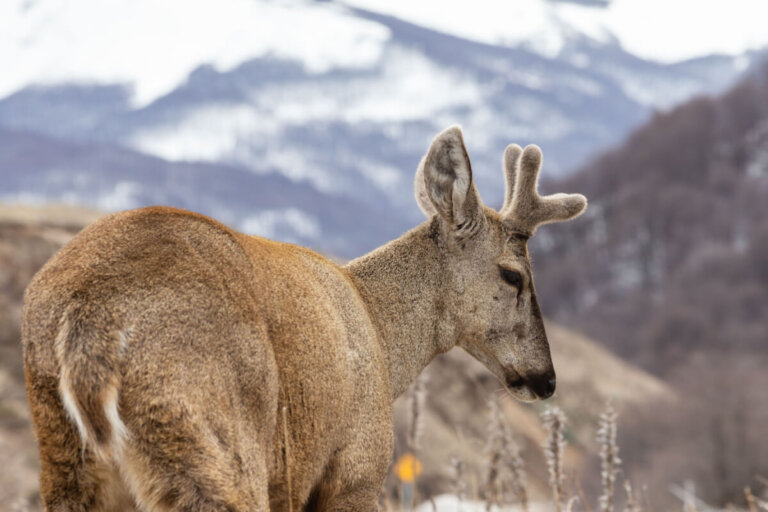

Reviewed and approved by the biologist Georgelin Espinoza Medina
The Pacific coast and the high mountains of the Andes are some of the unique ecosystems inhabited by the most amazing animals in Chile. In fact, this South American country is made up of three geographical zones: Continental, insular, and Antarctic territory.
In the following article, you’ll discover the characteristics, habitat, and threats faced by species such as the blue whale, certain kinds of penguins, and even endemic lizards of this region. Don’t miss it!
1. The huemul, the emblematic deer of the Andes
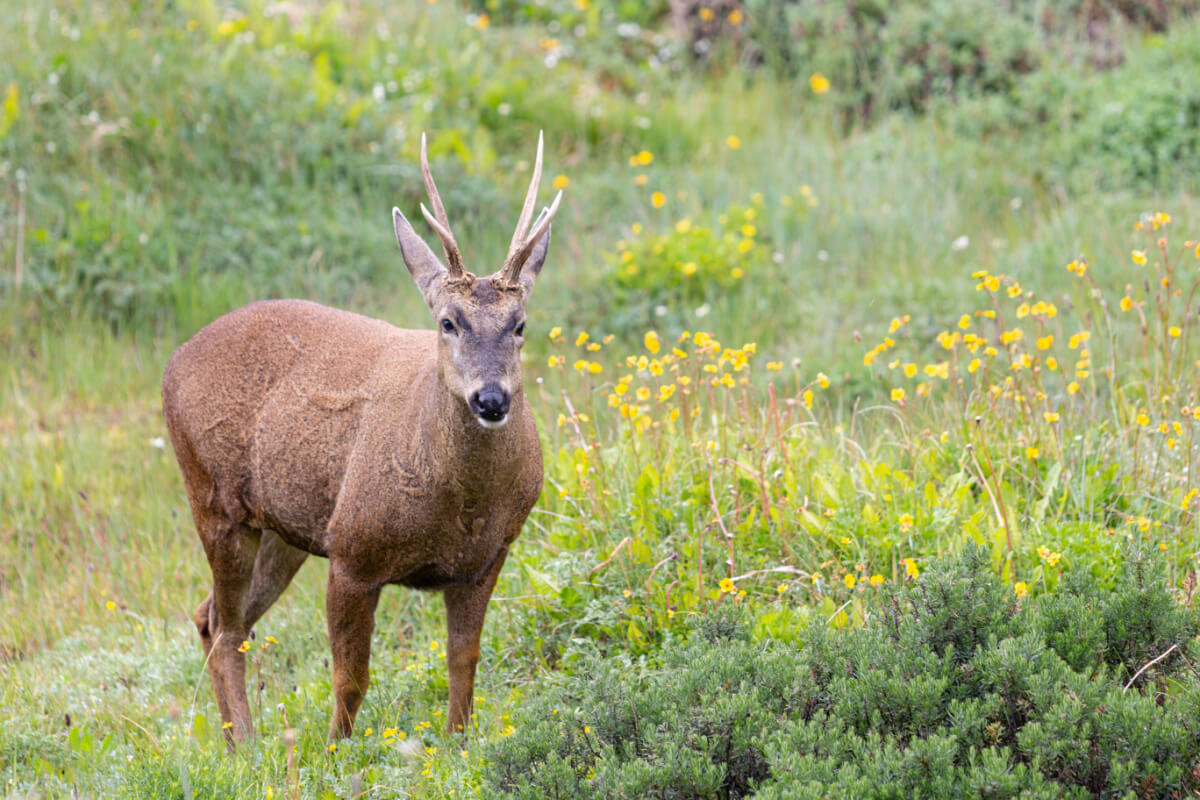
The huemul (Hippocamelus bisulcus) is one of the most representative animals of the Chilean Patagonia. This native deer of the Andes is known for its majesty and its importance as a national symbol. It’s related to the taruca (Hippocamelus antisensis), however, they’re two different species.
It has a thick, dense brown coat that helps it survive in the cold winters of the high mountains.
Its most notable adaptation is its ability to live in steep, rocky terrain. It can even be found up to 10,000 meters above sea level, according to data provided by the International Union for Conservation of Nature.
Unfortunately, its habitat is threatened by deforestation and human expansion. However, multiple conservation programs have been implemented to protect this species.
2. The pudú, the small deer of the forests
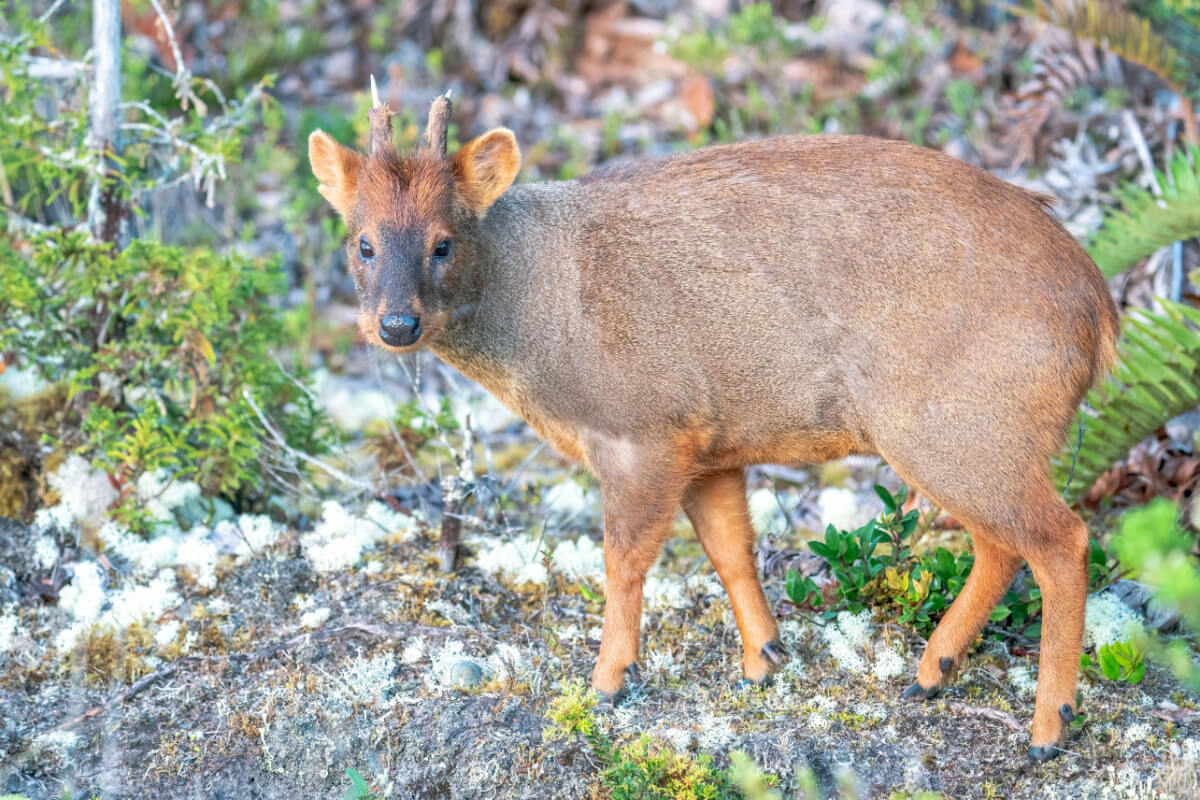
The pudú (Pudu puda) is the second smallest deer in the world and is found in the forests of southern Chile. It’s an adorable animal that measures a little over a foot tall at the withers.
Their compact size allows them to move easily through dense forest vegetation. Pudús are also excellent swimmers and can escape predators by wading into nearby bodies of water.
Deforestation and poaching have caused a significant decline in their population. They’re now protected by a recovery, conservation, and management plan in Chile.
3. The Condor, the lord of the skies
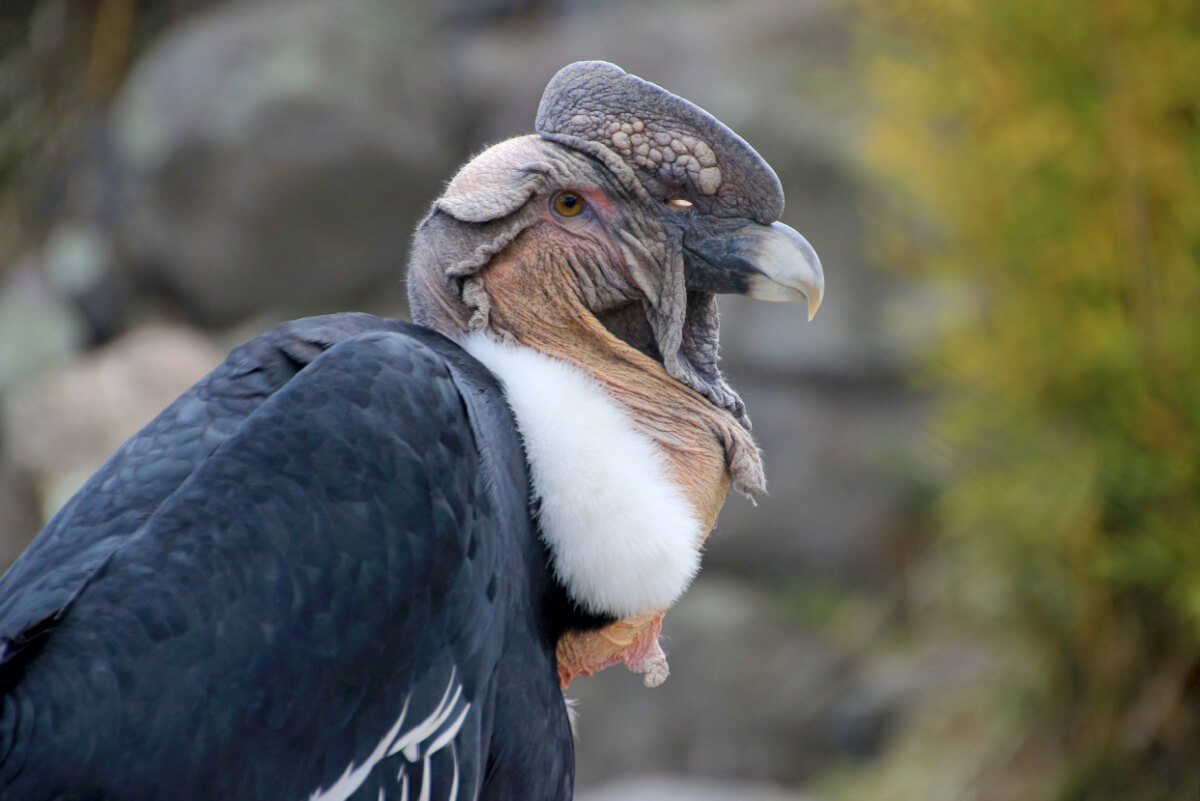
The condor (Vultur gryphus) is one of Chile’s most imposing and emblematic birds. With a wingspan of up to 10.5 feet, according to data provided by Animal Diversity Web. It’s considered the largest flying bird in the Americas and one of the largest in the world.
The condor is a master of flight, taking advantage of rising currents of warm air to soar.
These birds serve a vital ecological function by cleaning up the carcasses of dead animals, which helps prevent the spread of disease. Despite their status as a symbol of Chilean wildlife, condors have faced threats, such as illegal hunting and loss of habitat.
4. The Humboldt penguin, the graceful swimmer
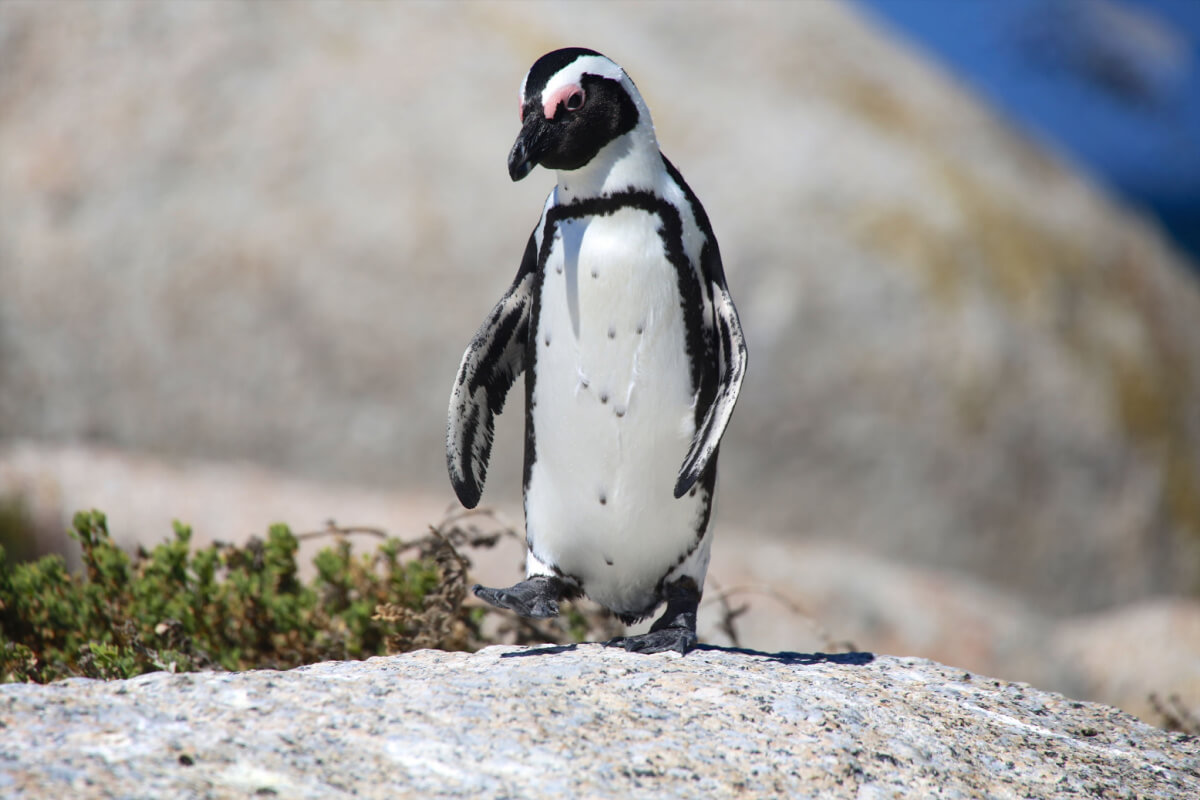
The Humboldt penguin (Spheniscus humboldti) is a species found on the coasts of Chile. They’re charming swimming birds with distinctive black and white plumage.
They’re also famous for their ability to dive for food.
They’re sociable and form colonies where they breed. However, the survival of this species is threatened by the following human practices and phenomena:
- Marine pollution
- Overfishing
- Climate change
Conservation efforts are focused on protecting their marine habitats and ensuring food availability.
5. The quirquincho, the armored defender
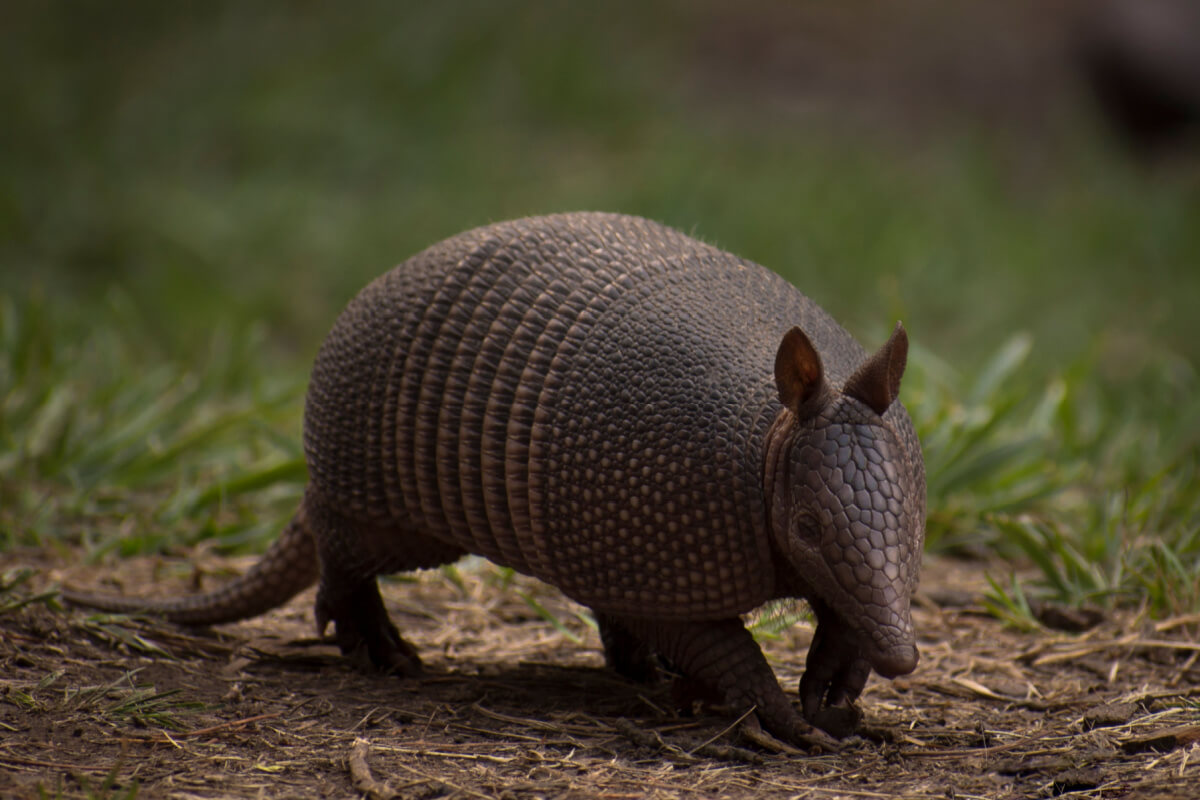
The quirquincho (Chaetophractus vellerosus) is an armadillo from Chile that’s also found in Argentina, Paraguay, and Bolivia. This is indicated by its distribution records, reported in a study published in the journal Mammalian Species.
These curious animals have bony plates on their backs that form a protective armor against predators.
Their diet is omnivorous, as they eat insects and other invertebrates, as well as carrion and plant material. All this, through the use of their long sticky tongue. Although their armor is effective against many predators, their habitat is threatened by intensive agriculture and urbanization.
6. The blue whale, the giant of the oceans

The blue whale (Balaenoptera musculus) is the largest animal that has ever existed on our planet. These marine giants can reach lengths of up to 100 feet and weigh more than 150 tons.
Chile offers unique opportunities to spot these majestic creatures during their migration along the coast, which can be recorded as far north as the island of Chiloé.
Despite their imposing size, blue whales are threatened by illegal whaling. Conservation efforts are focused on protecting feeding and breeding areas.
7. The golden lizard, a species native to Chile
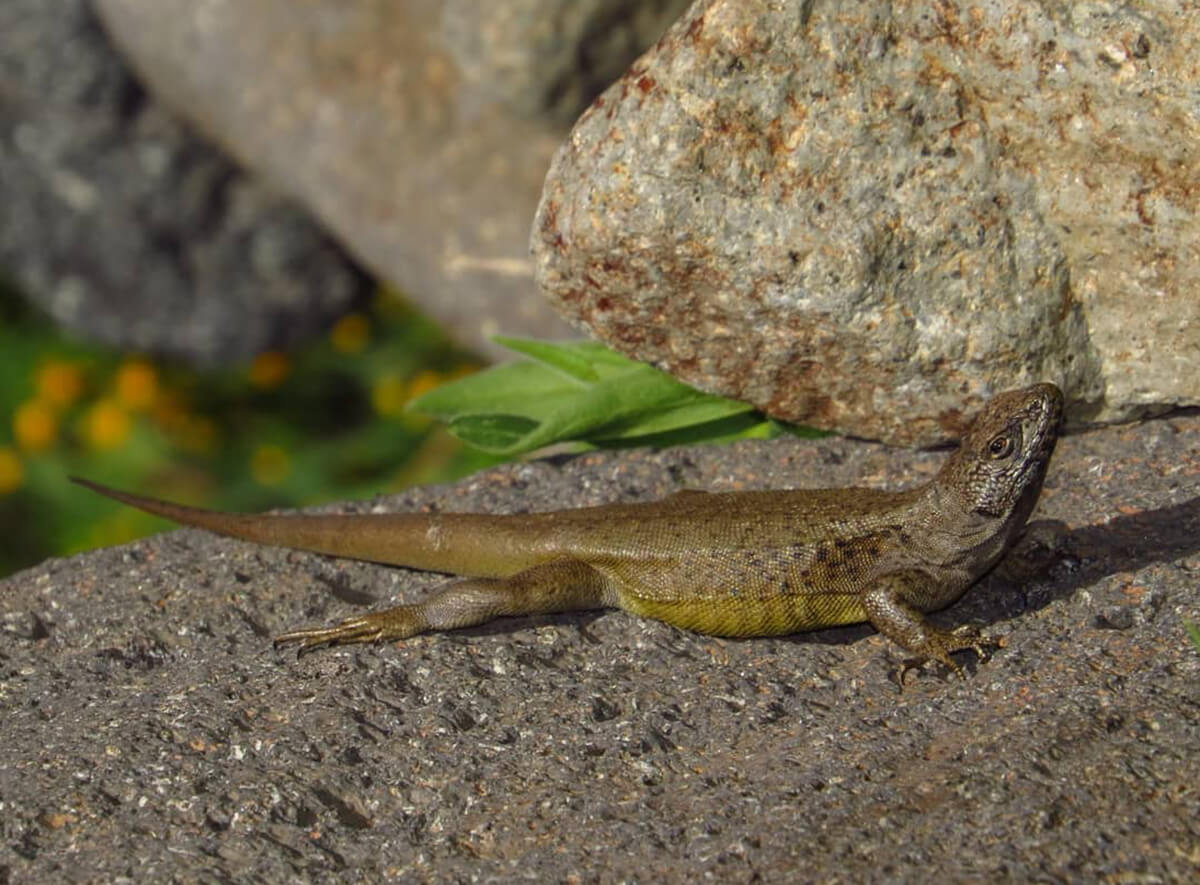
The golden lizard (Liolaemus aureum) is found in the Andes Mountains, right on the northwestern slope of the Copahue volcano. This is highlighted in a Bulletin of the National Museum of Natural History of Chile.
The main difference between this species and other types of lizards common in the country is its scales. The golden lizard lacks a color pattern on its back. In addition, it has a bright yellow color on the lower flanks.
6. The guanaco, a relative of the llama
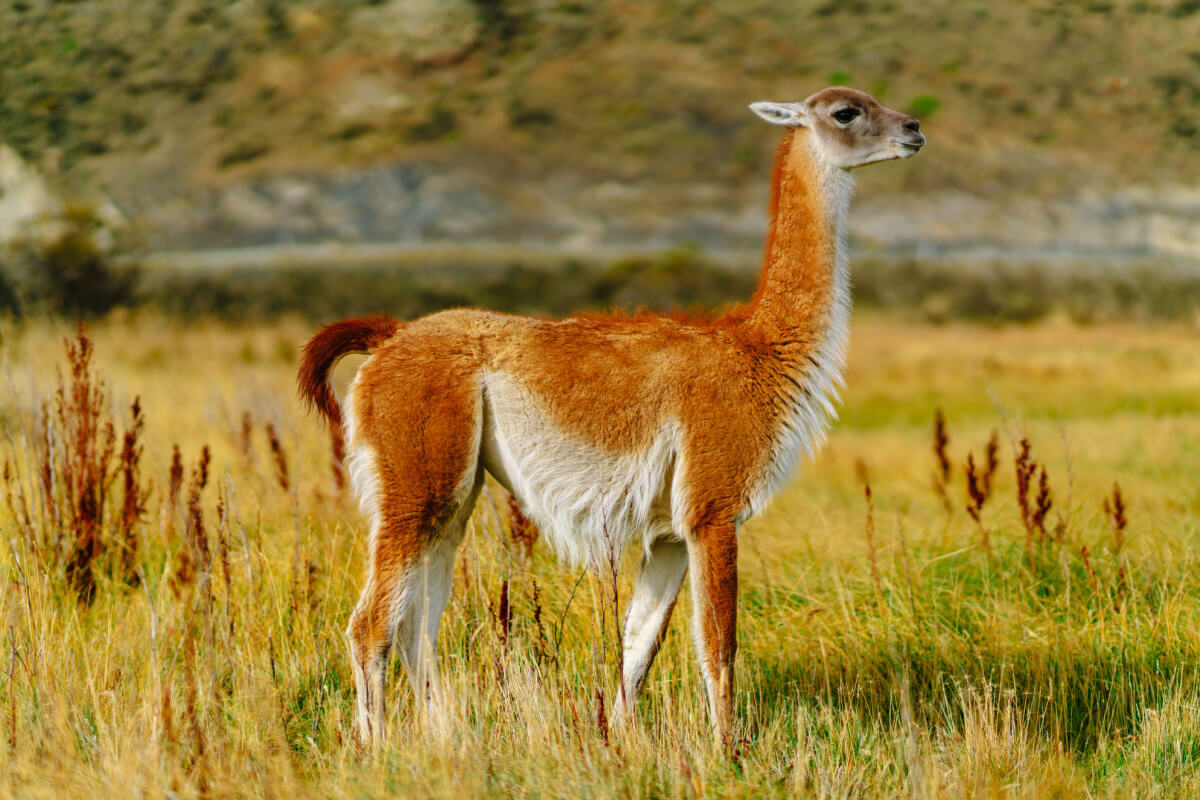
The guanaco (Lama guanicoe) is a wild relative of the llama, inhabiting the Andean regions of Chile. These elegant herbivores are well adapted to the extreme conditions of the high mountains. They’re also known for their speed and agility.
Guanacos form social groups and move in herds in search of pastures.
Their wool is highly valued and used in the production of textiles. However, illegal hunting and habitat degradation threaten the survival of this species.
8. The culpeo, cunning inhabitant of Patagonia
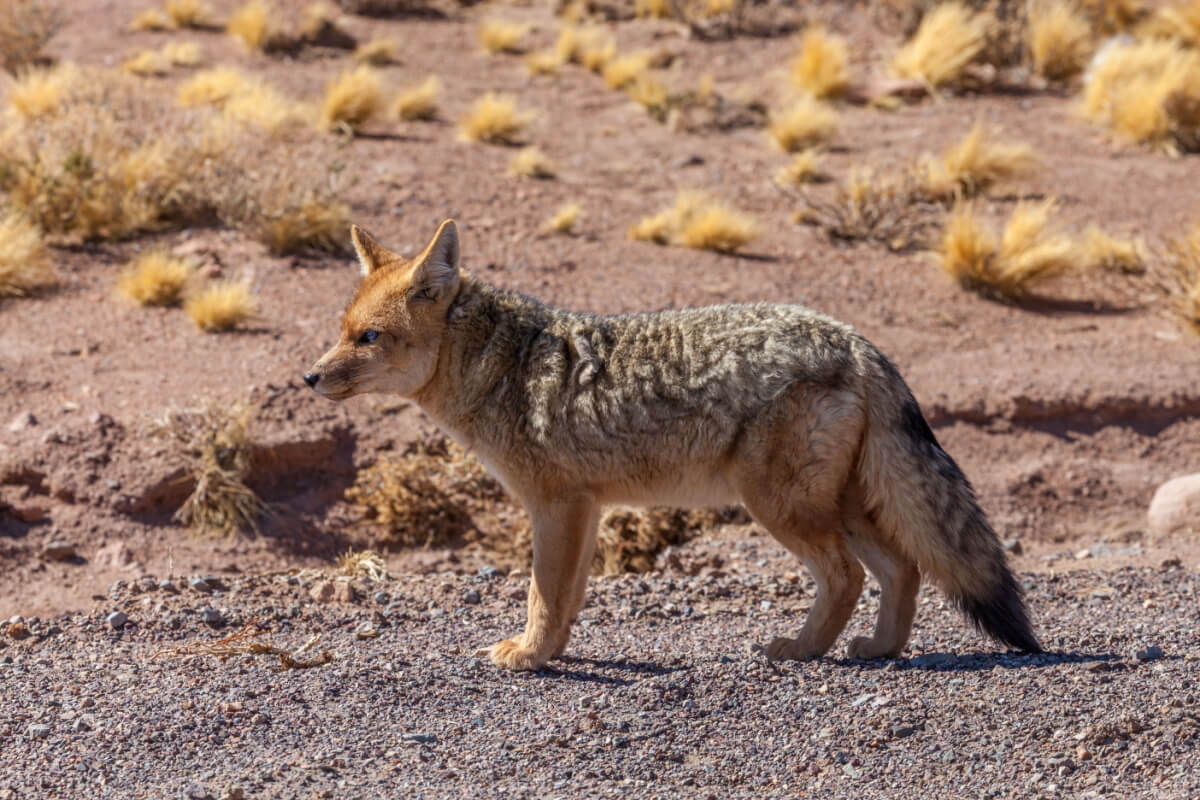
The culpeo (Lycalopex culpaeus) is a canid native to Chile and one of the country’s most abundant carnivorous animals. They’re foxes with thick, fluffy fur that allows them to survive in cold climates.
They’re very adaptable animals and can be found in diverse habitats, from rural areas to mountainous regions. The culpeo fox plays an important role in controlling rodents and other small mammal populations.
10. The monito del monte, a marsupial of Chile
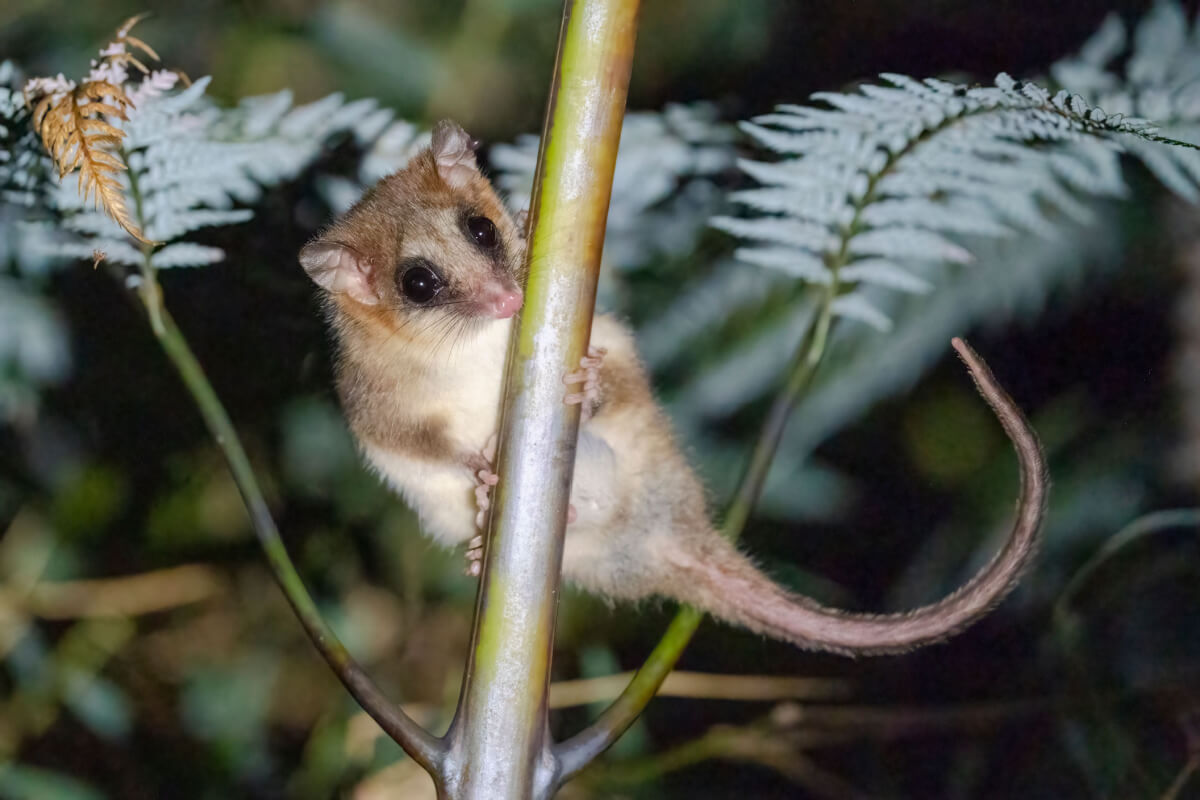
The monito del monte (Dromiciops gliroides), also known as the colocolo opossum, is a unique marsupial found in the forests of southern Chile. Although its appearance is similar to that of a mouse, this small animal has a marsupial pouch in which it carries and protects its young.
According to a publication by Acta Oecologica, it plays an important role in seed dispersal and is considered a “living fossil” due to its evolutionary antiquity. The destruction of forest habitat represents a significant threat to its survival.
The animals of Chile need protection
Chile is a treasure trove of biodiversity, and these ten amazing animals are just a small sample of the richness of its fauna. From the majestic deer of the Andes to the marsupials of the southern forests, each species plays a vital role in Chile’s ecosystems. It’s essential to recognize the importance of their conservation and work together to protect them.
The Pacific coast and the high mountains of the Andes are some of the unique ecosystems inhabited by the most amazing animals in Chile. In fact, this South American country is made up of three geographical zones: Continental, insular, and Antarctic territory.
In the following article, you’ll discover the characteristics, habitat, and threats faced by species such as the blue whale, certain kinds of penguins, and even endemic lizards of this region. Don’t miss it!
1. The huemul, the emblematic deer of the Andes

The huemul (Hippocamelus bisulcus) is one of the most representative animals of the Chilean Patagonia. This native deer of the Andes is known for its majesty and its importance as a national symbol. It’s related to the taruca (Hippocamelus antisensis), however, they’re two different species.
It has a thick, dense brown coat that helps it survive in the cold winters of the high mountains.
Its most notable adaptation is its ability to live in steep, rocky terrain. It can even be found up to 10,000 meters above sea level, according to data provided by the International Union for Conservation of Nature.
Unfortunately, its habitat is threatened by deforestation and human expansion. However, multiple conservation programs have been implemented to protect this species.
2. The pudú, the small deer of the forests

The pudú (Pudu puda) is the second smallest deer in the world and is found in the forests of southern Chile. It’s an adorable animal that measures a little over a foot tall at the withers.
Their compact size allows them to move easily through dense forest vegetation. Pudús are also excellent swimmers and can escape predators by wading into nearby bodies of water.
Deforestation and poaching have caused a significant decline in their population. They’re now protected by a recovery, conservation, and management plan in Chile.
3. The Condor, the lord of the skies

The condor (Vultur gryphus) is one of Chile’s most imposing and emblematic birds. With a wingspan of up to 10.5 feet, according to data provided by Animal Diversity Web. It’s considered the largest flying bird in the Americas and one of the largest in the world.
The condor is a master of flight, taking advantage of rising currents of warm air to soar.
These birds serve a vital ecological function by cleaning up the carcasses of dead animals, which helps prevent the spread of disease. Despite their status as a symbol of Chilean wildlife, condors have faced threats, such as illegal hunting and loss of habitat.
4. The Humboldt penguin, the graceful swimmer

The Humboldt penguin (Spheniscus humboldti) is a species found on the coasts of Chile. They’re charming swimming birds with distinctive black and white plumage.
They’re also famous for their ability to dive for food.
They’re sociable and form colonies where they breed. However, the survival of this species is threatened by the following human practices and phenomena:
- Marine pollution
- Overfishing
- Climate change
Conservation efforts are focused on protecting their marine habitats and ensuring food availability.
5. The quirquincho, the armored defender

The quirquincho (Chaetophractus vellerosus) is an armadillo from Chile that’s also found in Argentina, Paraguay, and Bolivia. This is indicated by its distribution records, reported in a study published in the journal Mammalian Species.
These curious animals have bony plates on their backs that form a protective armor against predators.
Their diet is omnivorous, as they eat insects and other invertebrates, as well as carrion and plant material. All this, through the use of their long sticky tongue. Although their armor is effective against many predators, their habitat is threatened by intensive agriculture and urbanization.
6. The blue whale, the giant of the oceans

The blue whale (Balaenoptera musculus) is the largest animal that has ever existed on our planet. These marine giants can reach lengths of up to 100 feet and weigh more than 150 tons.
Chile offers unique opportunities to spot these majestic creatures during their migration along the coast, which can be recorded as far north as the island of Chiloé.
Despite their imposing size, blue whales are threatened by illegal whaling. Conservation efforts are focused on protecting feeding and breeding areas.
7. The golden lizard, a species native to Chile

The golden lizard (Liolaemus aureum) is found in the Andes Mountains, right on the northwestern slope of the Copahue volcano. This is highlighted in a Bulletin of the National Museum of Natural History of Chile.
The main difference between this species and other types of lizards common in the country is its scales. The golden lizard lacks a color pattern on its back. In addition, it has a bright yellow color on the lower flanks.
6. The guanaco, a relative of the llama

The guanaco (Lama guanicoe) is a wild relative of the llama, inhabiting the Andean regions of Chile. These elegant herbivores are well adapted to the extreme conditions of the high mountains. They’re also known for their speed and agility.
Guanacos form social groups and move in herds in search of pastures.
Their wool is highly valued and used in the production of textiles. However, illegal hunting and habitat degradation threaten the survival of this species.
8. The culpeo, cunning inhabitant of Patagonia

The culpeo (Lycalopex culpaeus) is a canid native to Chile and one of the country’s most abundant carnivorous animals. They’re foxes with thick, fluffy fur that allows them to survive in cold climates.
They’re very adaptable animals and can be found in diverse habitats, from rural areas to mountainous regions. The culpeo fox plays an important role in controlling rodents and other small mammal populations.
10. The monito del monte, a marsupial of Chile

The monito del monte (Dromiciops gliroides), also known as the colocolo opossum, is a unique marsupial found in the forests of southern Chile. Although its appearance is similar to that of a mouse, this small animal has a marsupial pouch in which it carries and protects its young.
According to a publication by Acta Oecologica, it plays an important role in seed dispersal and is considered a “living fossil” due to its evolutionary antiquity. The destruction of forest habitat represents a significant threat to its survival.
The animals of Chile need protection
Chile is a treasure trove of biodiversity, and these ten amazing animals are just a small sample of the richness of its fauna. From the majestic deer of the Andes to the marsupials of the southern forests, each species plays a vital role in Chile’s ecosystems. It’s essential to recognize the importance of their conservation and work together to protect them.
All cited sources were thoroughly reviewed by our team to ensure their quality, reliability, currency, and validity. The bibliography of this article was considered reliable and of academic or scientific accuracy.
- Amico, G. C., Rodríguez-Cabal, M. A., & Aizen, M. A. (2009). The potential key seed-dispersing role of the arboreal marsupial Dromiciops gliroides. Acta Oecologica, 35(1), 8-13. https://www.sciencedirect.com/science/article/pii/S1146609X08001185
- Biblioteca del Congreso Nacional de Chile. (2022). Aprueba plan de recuperación, conservación y gestión del huemul (Hippocamelus bisulcus) en la zona los Nevados de Chillán. Consultado el 11 de julio de 2023. https://www.bcn.cl/leychile/navegar?idNorma=1172653
- Black-Decima, P., Saucedo, C., Corti, P., Díaz, N., Fernandez, R., Geist, V., Gill, R., Gizejewski, Z., Jiménez, J., Pastore, H., & Wittmer, H. (2015). IUCN Red List of Threatened Species: Hippocamelus bisulcus. IUCN Red List of Threatened Species. Consultado el 20 de julio de 2023. https://www.iucnredlist.org/species/10054/22158895
- Dantas, G. P., Oliveira, L. R., Santos, A. M., Flores, M. D., Melo, D. R. D., Simeone, A. et al. (2019). Uncovering population structure in the Humboldt penguin (Spheniscus humboldti) along the Pacific coast at South America. PLoS One, 14(5), e0215293. https://journals.plos.org/plosone/article?id=10.1371/journal.pone.0215293
- Díaz, R., Maldonado, P., & Demangel, D. (2018). Liolaemus aureum, una nueva especie andina del sur de Chile (Sauria: Liolaemidae). Boletín del Museo Nacional de Historia Natural, 67(2): 155-171. https://publicaciones.mnhn.gob.cl/668/w3-article-92384.html
- Gallo, J. A., Superina, M., & Abba, A. M. (2022). Chaetophractus villosus (Cingulata: Chlamyphoridae). Mammalian Species, 54(1014), seab017. https://academic.oup.com/mspecies/article-abstract/54/1014/seab017/6527948
- Garay, G., Ortega, I. M., & Guineo, O. (2016). Social ecology of the huemul at Torres del Paine National Park, Chile. Anales del Instituto de la Patagonia, 44(1), 25-38. https://analesdelinstitutodelapatagonia.cl/article/view/789
- Guzmán, A. (2006). Avistamientos de ballenas azul balaenoptera musculus (linnaeus, 1758) y sei b. borealis lesson, 1828 en la costa nor – occidental de la isla de Chiloé, Chile. Boletín del Museo Nacional de Historia Natural, (Boletín 55), 51-60. https://publicaciones.mnhn.gob.cl/668/w3-article-64532.html
- Kidd, T. (2014). Vultur gryphus (Andean condor). Animal Diversity Web. Consultado el 20 de julio de 2023. https://animaldiversity.org/accounts/Vultur_gryphus/
- Valladares-Gómez, A., Celis-Diez, J. L., Sepúlveda-Rodríguez, C., Inostroza-Michael, O., Hernández, C. E., & Palma, R. E. (2019). Genetic diversity, population structure, and migration scenarios of the marsupial “Monito del Monte” in South-Central Chile. Journal of Heredity, 110(6), 651-661. https://academic.oup.com/jhered/article/110/6/651/5550913?login=false
This text is provided for informational purposes only and does not replace consultation with a professional. If in doubt, consult your specialist.








